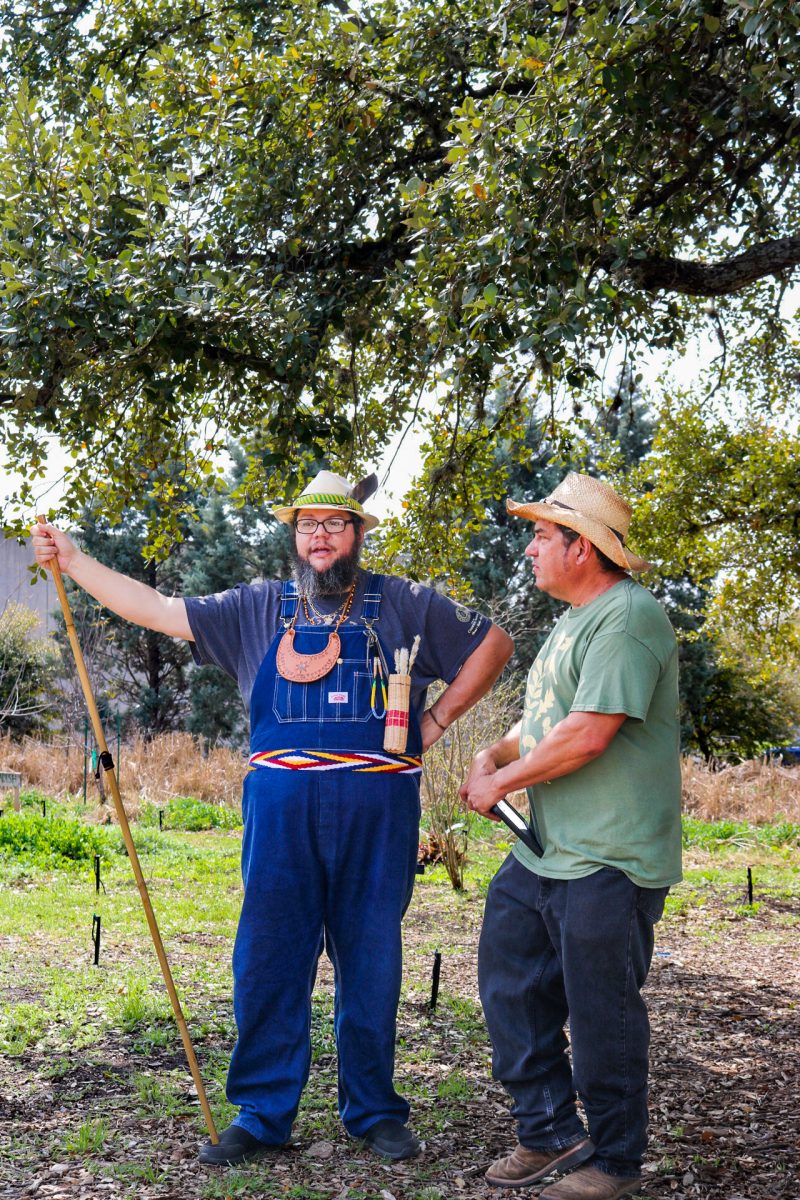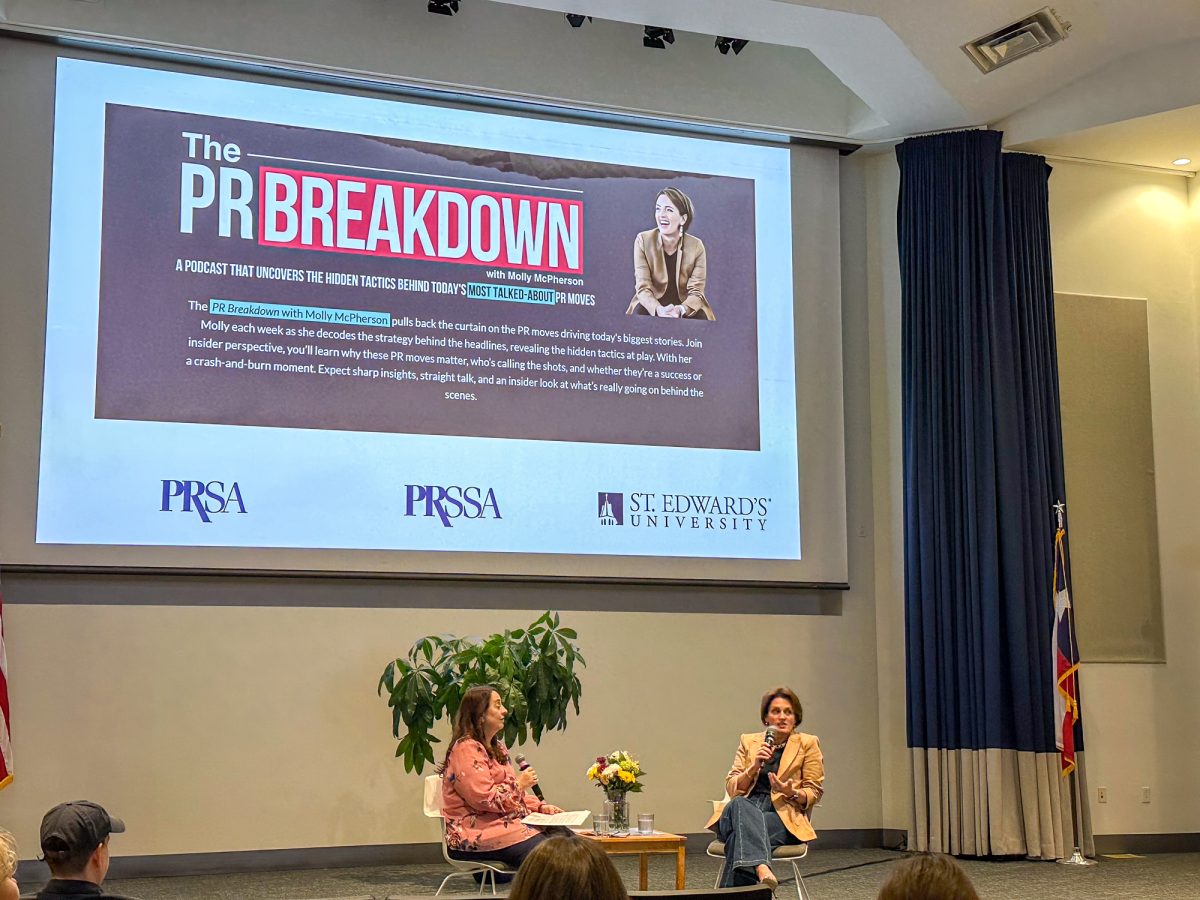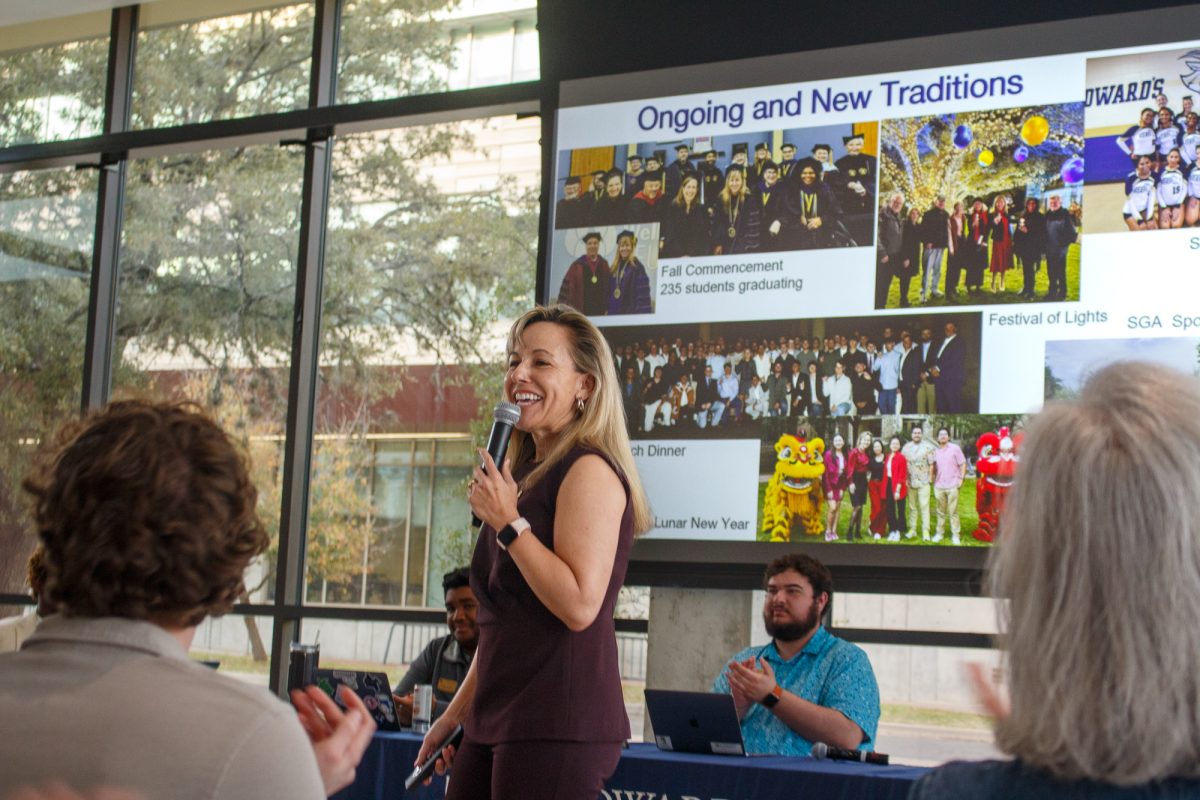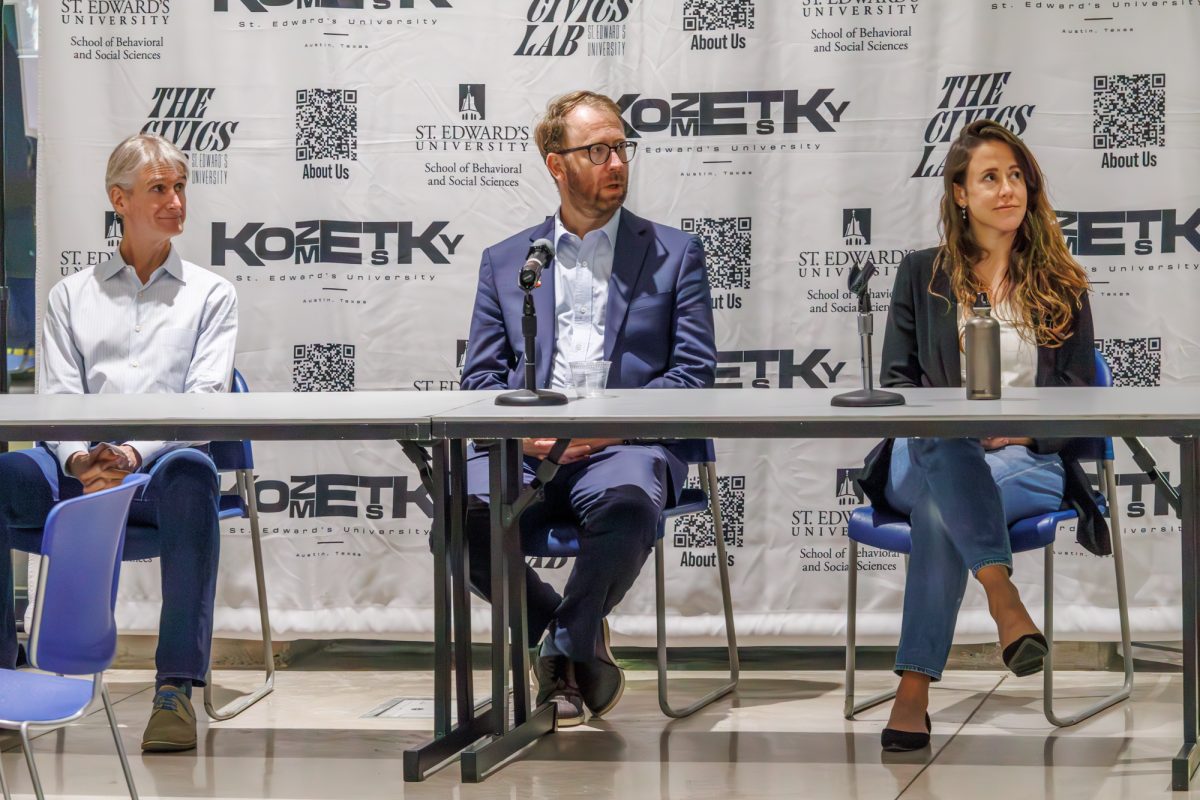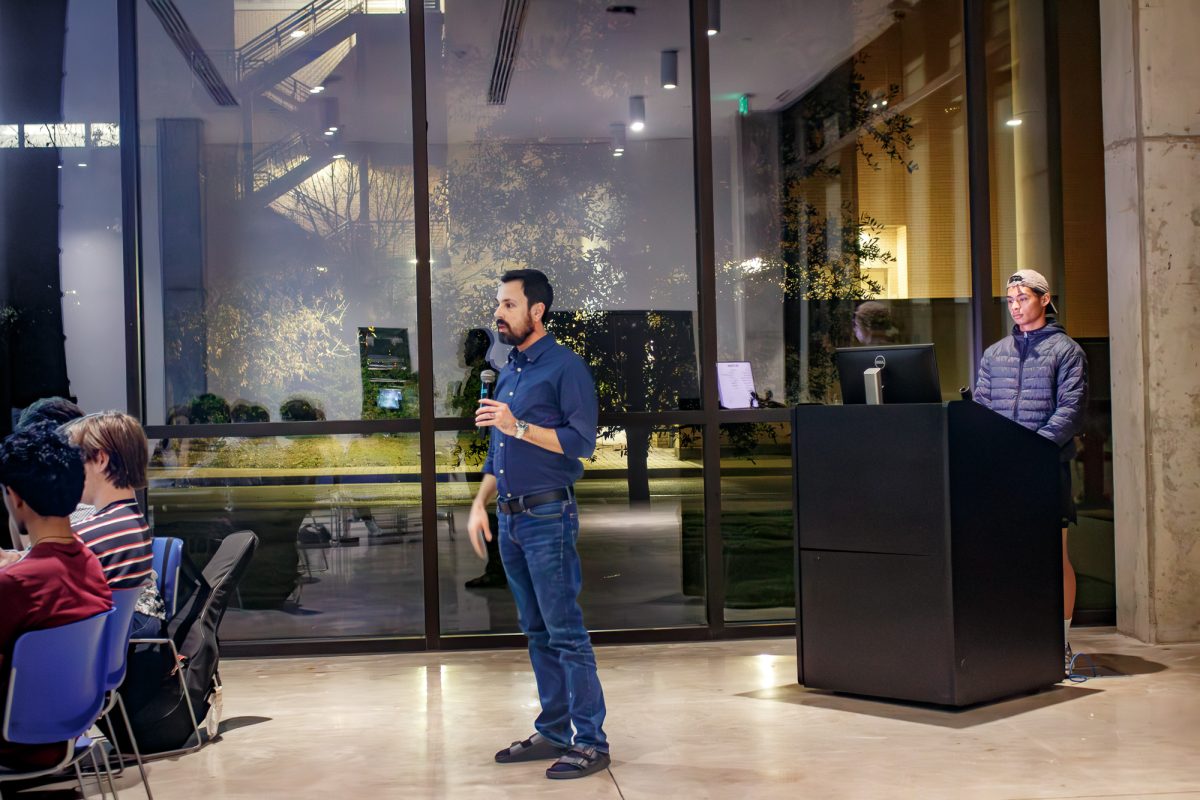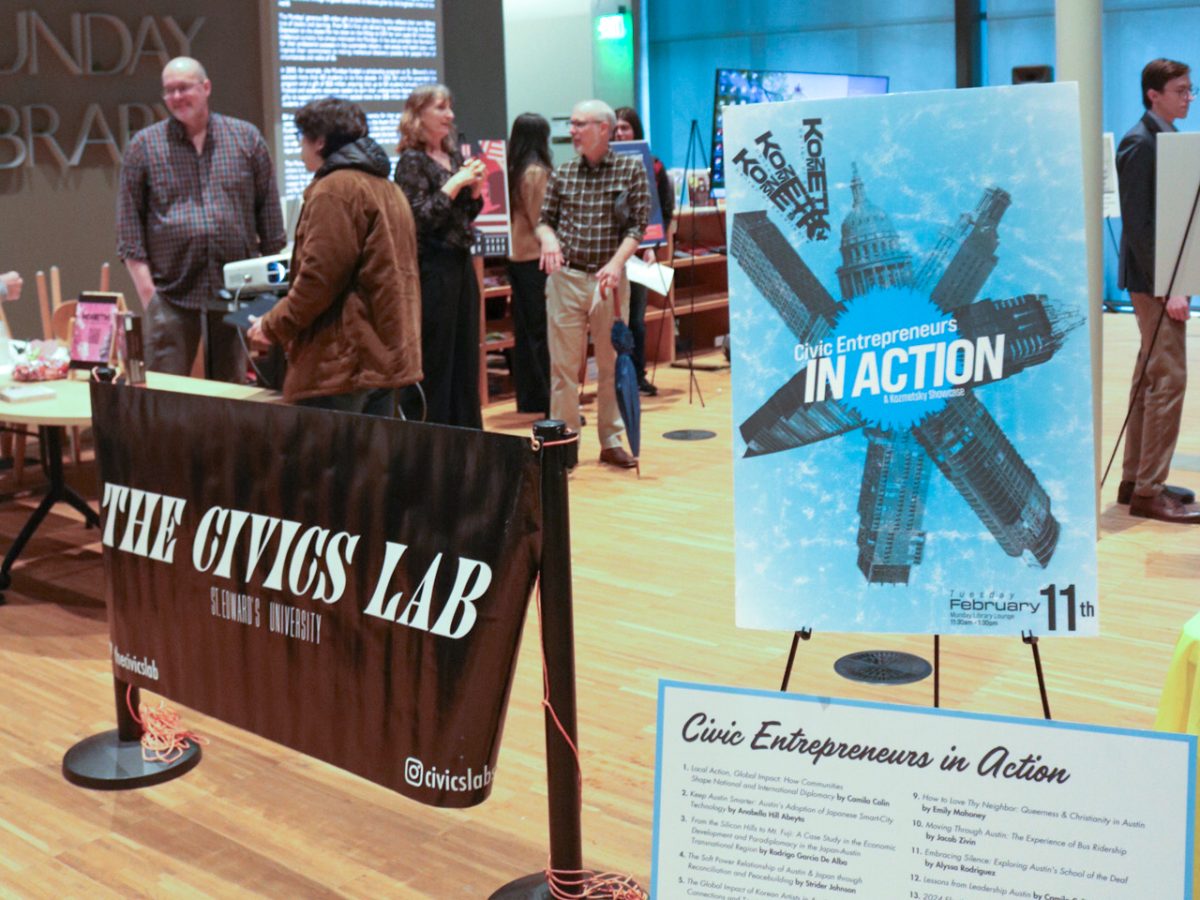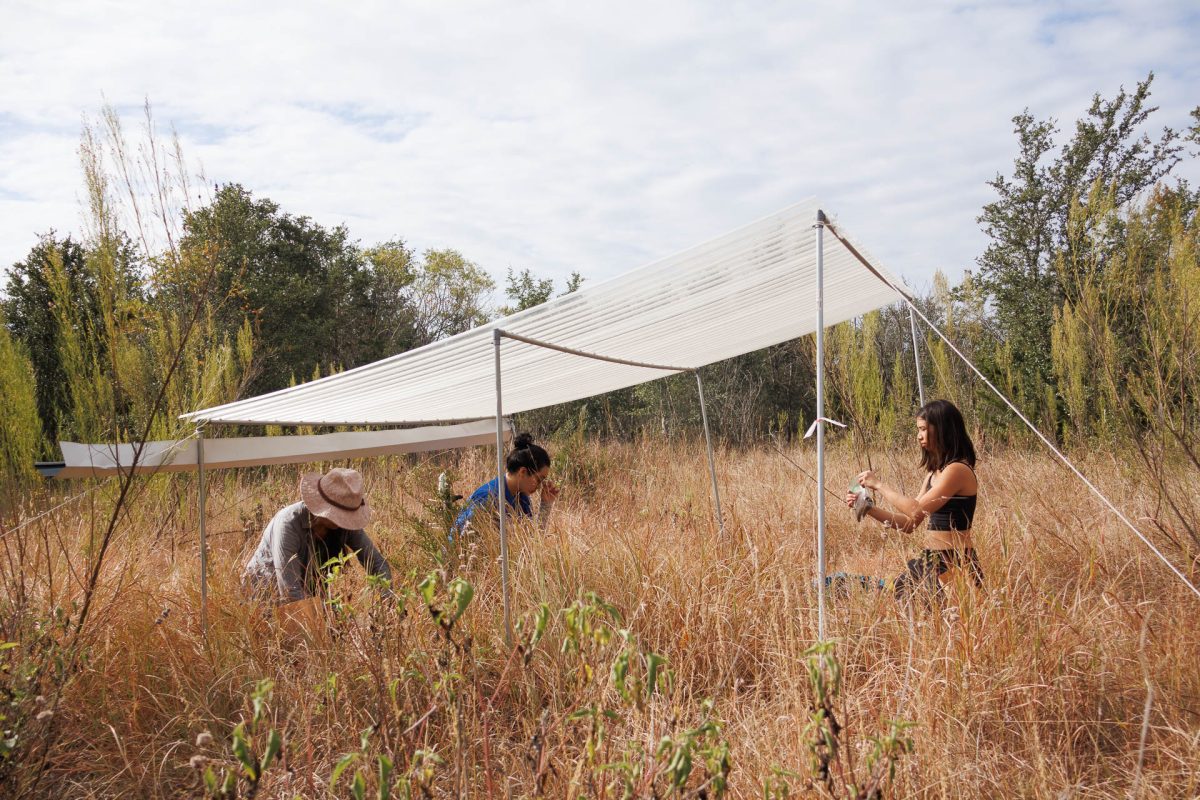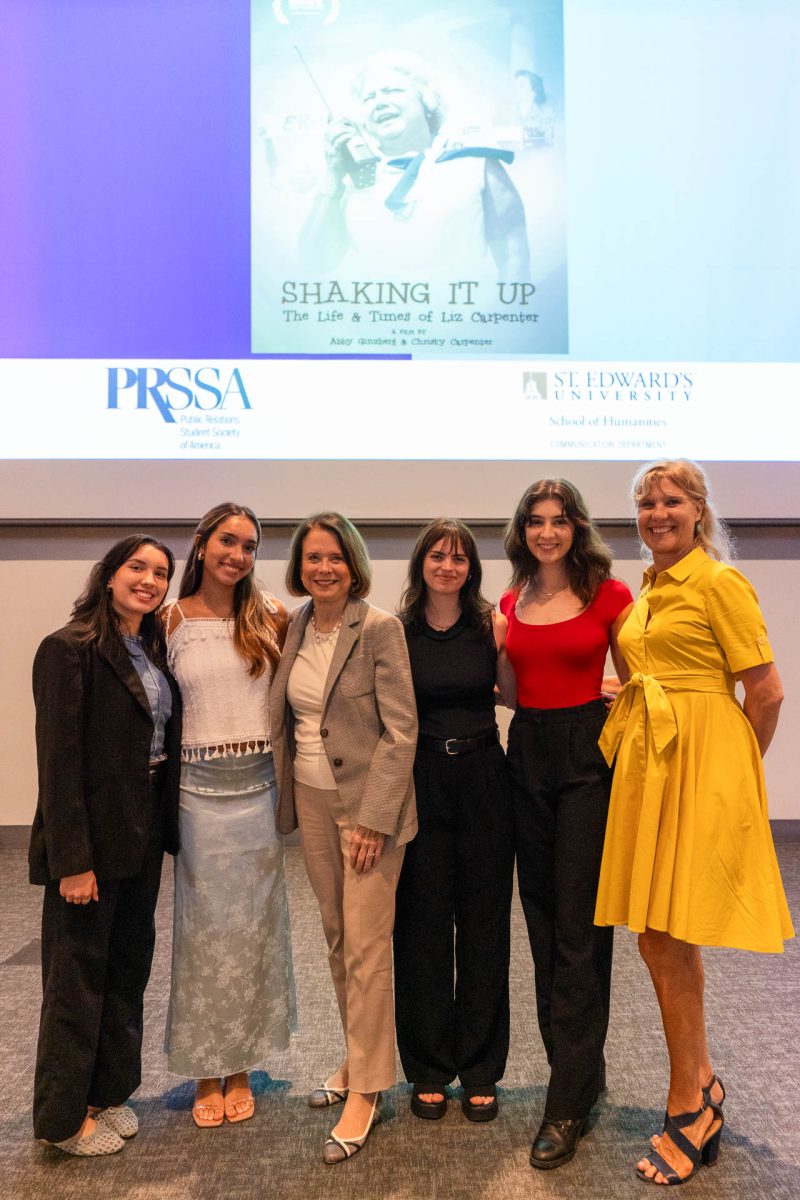Tucked behind Teresa Hall and the Maryhill Apartments, the campus food forest has become home to an ancient heirloom: Cherokee corn. Unlike the standard yellow dent corn commonly grown in the U.S., this variety features larger kernels that range in color from white to deep purple.
This vibrant heritage corn has found new life on the hilltop, thanks to a partnership with the Central Texas Cherokee Township. The initiative, led by Doug Martin of the Cherokee culture group and Roy Johnson, the campus sustainability coordinator and arborist, is more than just an agricultural project – it’s a mission to preserve cultural heritage, promote biodiversity and educate the St. Edwards community on sustainable farming practices.
The project began two years ago when the Cherokee Nation provided a grant for community outreach. Martin explained that it’s “part of a larger program to give Cherokee citizens access to their native seeds.” The project has cultivated two heirloom varieties thus far, including the Cherokee color flour corn and white eagle corn, which have been sourced from the Cherokee Nation seed bank in Oklahoma.
For the Cherokee people, corn is more than just a crop – it’s a connection to their ancestors and rich history.
“These are the corn varieties that my grandfather and great-grandfathers could have grown,” Martin said. “A lot of the stories we tell revolve around corn and corn culture. The first story we are told is of the first woman Selu, the Corn Mother, and the first man Kana’ti, the Hunter. The food system is built into the story of the first two people and their adventures.”
This deep cultural significance is complemented by traditional practices like nixtamalization, a process that increases the nutritional value of corn by soaking and cooking it in an alkaline solution typically limewater. This method makes the corn easier to grind and enhances the bioavailability of nutrients while increasing its calcium content. Martin demonstrates this at community events, explaining, “If you only ate sweet corn or canned corn for the rest of your life, you’d probably perish within a month – but with nixtamalization, the corn actually becomes a superfood.”
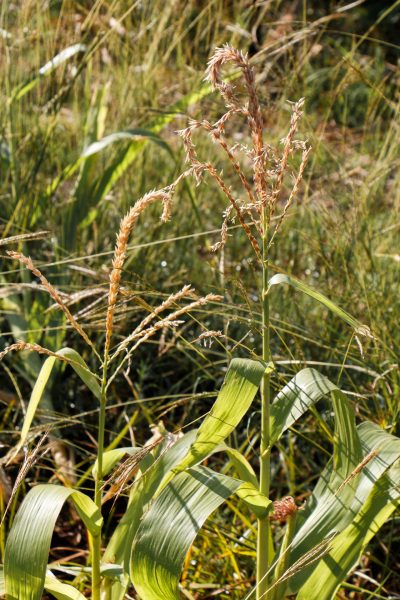
In an agricultural landscape dominated by genetically modified crops, these heirloom varieties serve a crucial purpose.
“The real asset to this is that we’re keeping these ancient genetics alive,” Johnson said.
This genetic diversity is essential for food security, as these varieties are more resilient and adaptable to changing environmental conditions. The project also showcases the “Three Sisters” planting method – a traditional Native American technique that involves growing corn, beans and squash together, naturally enriching the soil and providing a balanced diet.
The corn project has sparked interest across the campus community. Nina Collard, president of Students for Sustainability (SFS), sees the project as an embodiment of intersectional environmentalism.
“It represents what SFS stands for – supporting marginalized communities who have been disproportionately harmed and had their environment and ways of life taken from them,” Collard said. “The Three Sisters’ garden model is an ideal representation of regenerative agriculture, which is healthier for our planet and people.”
The project extends beyond the campus, forming partnerships with local community gardens and native groups. It becomes a platform for education about indigenous farming practices, food sovereignty and the importance of preserving heirloom crops.
While the project has seen success, it’s not without challenges. Martin explained that crops that do well in Oklahoma may not grow as well here. However, he remains optimistic: “What we do know is that the corn will eventually acclimate.” Looking ahead, the team plans to focus on spring planting, which has proven more successful in the Texas climate. They’re also considering expanding their cultivation of white eagle corn, which has shown better adaptation to local conditions.
As the ancient corn varieties take root on St. Edward’s campus, they stand as living testaments to the power of preserving cultural heritage while promoting ecological diversity. In the words of a Cherokee saying shared by Martin, “No self-respecting Cherokee is without a corn plot.” Through this project, the Cherokee community in Central Texas reclaims a piece of their heritage.



